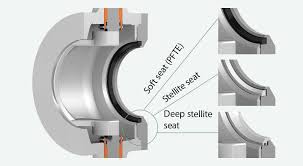Soft Seated or Metal Seated Ball Valves

the modulating control valve allows you to control the
globe valve symbol
Soft Seated Ball Valves vs. Metal Seated Ball Valves
There are two primary types of ball valve seats: soft seated and metal seated. Soft seated ball valves utilize thermoplastic materials like PTFE or NBR, while metal seated ball valves employ materials such as 316 stainless steel or Monel.
Each seat type offers distinct advantages and disadvantages, making the selection of the appropriate ball valve seat a critical decision for various industrial applications.
Soft Seated Ball Valves
Soft seated ball valves are generally suitable for clean fluid applications, as the soft seat material may be susceptible to damage from particulates, leading to potential leakage issues. These valves excel in providing the tightest shut-off capability, often achieving the highest leakage class standards.
Additionally, soft seated ball valves typically require lower operating torque, which can lead to the selection of smaller, more compact actuators.
Metal Seated Ball Valves
On the other hand, metal seated ball valves are the preferred choice for applications involving dirty fluids, high erosion, or corrosion. The metal seat materials can withstand these harsh conditions, ensuring a longer service life compared to soft seated valves.
Metal seated ball valves can also handle high temperatures, up to and exceeding 1,000°F, making them suitable for demanding process environments.
Selecting the Optimal Seat Type
When choosing between soft seated and metal seated ball valves, it is crucial to consider the specific process conditions, fluid characteristics, and performance requirements of the application.
If tight shut-off is the primary concern and the fluid is clean, a soft seated ball valve may be the best solution. Conversely, if the application involves abrasive, corrosive, or high-temperature fluids, a metal seated ball valve is likely the more suitable choice.
Manufacturers often offer variations on these seat types, such as using a metal seat ring with a soft seat insert, to combine the benefits of both designs.
Ultimately, a thorough understanding of the process requirements and a careful evaluation of the available options will help ensure the selection of the optimal ball valve seat type for your specific application.
